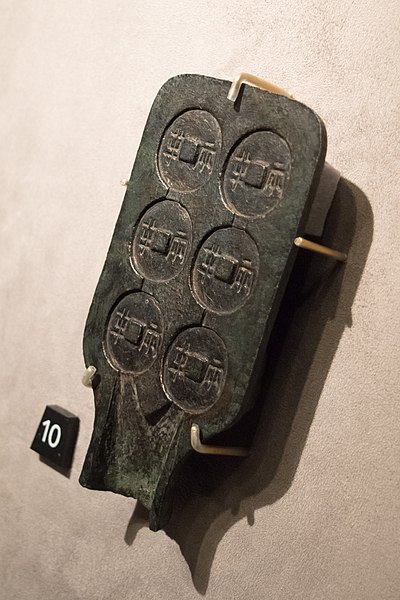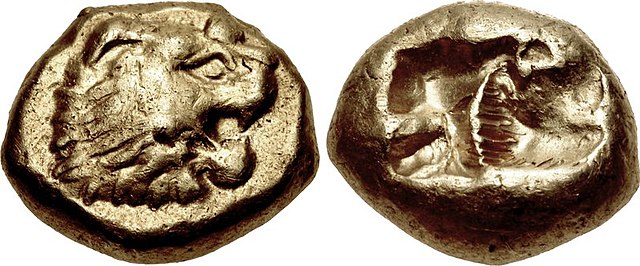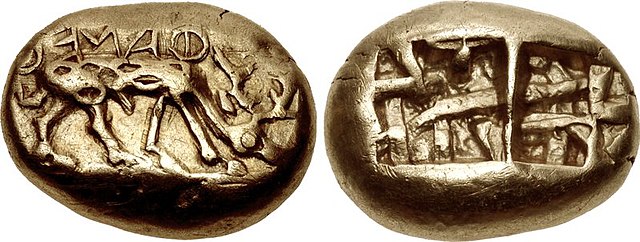The cash or qian was a type of coin of China and the Sinosphere, used from the 4th century BC until the 20th century AD, characterised by their round outer shape and a square center hole. Originally cast during the Warring States period, these coins continued to be used for the entirety of Imperial China. The last Chinese cash coins were cast in the first year of the Republic of China. Generally most cash coins were made from copper or bronze alloys, with iron, lead, and zinc coins occasionally used less often throughout Chinese history. Rare silver and gold cash coins were also produced. During most of their production, cash coins were cast, but during the late Qing dynasty, machine-struck cash coins began to be made. As the cash coins produced over Chinese history were similar, thousand year old cash coins produced during the Northern Song dynasty continued to circulate as valid currency well into the early twentieth century.

Replicas of various ancient to 19th century cast cash coins in various metals found in China, Korea and Japan.
Cash coins minted between 330 BC and 1912 AD.
Various cash coins issued during the early Republic of China.
Bronze mould for minting Ban Liang coins, the mould was used during the Warring States period (475–221 BC) by the State of Qin, from an excavation in Qishan County, Baoji, Shaanxi province.
A coin is a small object, usually round and flat, used primarily as a medium of exchange or legal tender. They are standardized in weight, and produced in large quantities at a mint in order to facilitate trade. They are most often issued by a government. Coins often have images, numerals, or text on them. The faces of coins or medals are sometimes called the obverse and the reverse, referring to the front and back sides, respectively. The obverse of a coin is commonly called heads, because it often depicts the head of a prominent person, and the reverse is known as tails.
A selection of metal coins
An oxhide ingot from Crete. Late Bronze Age metal ingots were given standard shapes, such as the shape of an "ox-hide", suggesting that they represented standardized values.
Coin of Alyattes of Lydia, c. 620/10–564/53 BC
The earliest inscribed coinage: electrum coin of Phanes from Ephesus, 625–600 BC. Obverse: Stag grazing right, ΦΑΝΕΩΣ (retrograde). Reverse: Two incuse punches, each with raised intersecting lines.








